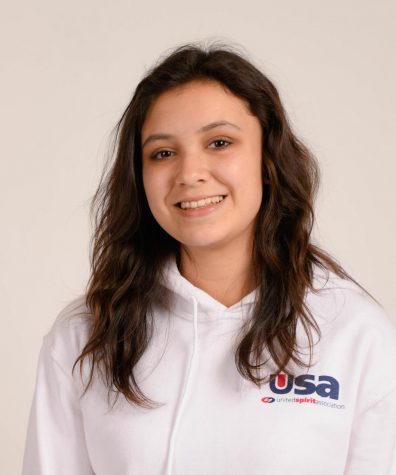Final Cut Pro(fessional)
Careers in technology, such as designing computer software, are gaining popularity because of the digital age. Computer science teacher Mitch Middler collaborates with companies such as Apple to help build computer graphing programs.
“I got to a point where I realized there is so much demand for software engineering in this country and we are not meeting the need for it. I think there could be a lot more done in the education system to help meet that end, and I wanted to be a part of that,” Middler said.
Middler used his math skills to help him determine careers when he was “uncertain” about what path to take.
“A lot of people I worked with started much younger than I did. I started getting into computer science in college. I got into it because I have always been good at math; I liked math. I was constantly trying to figure out what branch of computer science would work and mesh with that,” Middler said.
Soon after graduating college in 1990, he worked at a software engineering office in San pedro and since then has worked in the field for 28 years.
“One of the great things about computer science is that you can be interested in anything, like music or art, and it can tie into that. Going from company to company, I was trying to see which part of it I really enjoyed,” Middler said.
Not all branches of computer science are math-heavy, however Middler found that he preferred those that are.
“The initial traction was just the applications of math and the problem solving aspect of it. It lets me be inventive and create something new, trying to solve difficult problems. Computer graphing just checked all of those boxes,” Middler said.
Loving the “satisfaction” of each task, Middler decided on getting into computer graphics, which deals with pictures and film edited on a computer.
“It all started with being in the digital effects industry. There was a process in filmmaking called digital compositing, which is when movies have computer generated characters,” Middler said. “It’s more than just making a digital character and dropping it into a scene. It’s like when you have a green screen background and you put the characters in through that.”
Middler helped develop a tool that helps users organize their work when editing their film.
“All of these things, plus effects like smoke and dirt, can get mixed up. Compositing is a process that puts all of that together. I worked on the tool called Shake where the artist does the work and the software develops their product,” Middler said. “Working with a company called Nothing Real, we made Shake the industry leading program for compositing.”
Catching Apple’s eye with their software Shake, Nothing Real was bought by Apple and relocated to an office in Santa Monica.
“We were part of Apple, but we were still a small team working on Shake. They hired another team of about 15 people from another company, and they created a program called Motion,” Middler said.
Motion works with motion graphics, such as text or animations moving on a screen.
“Apple moved on from our product Shake. At first, they tried to charge more for the original version of it, which didn’t run on Apple products. They charged less for the Apple version, and then just did away with it completely,” Middler said. “Apple wants to serve the consumer market, and Shake was a tool for high-level pros only. So, Apple wasn’t interested in that anymore.”
Middler went on to join the Motion team and Apple started writing Final Cut Pro X (FCP X). He worked with his team to build in green screen technology into the program, along with other effects on it.
“After we finished that project, we just kept adding to FCP X. I put in a helping hand on many tools you can use to edit videos on that program,” Middler said.
During his time in Santa Monica, Middler had to test his limits when it came to taking on new tasks.
“There definitely were a lot of challenges along the way. For example, when I was working with Shake, all of my experience was in two-dimensional work,” Middler said. “My manager wanted us to put in a new feature that let people have a three-dimensional aspect. I hadn’t had that much experience in those sort of things.”
Although there were more people on his team that specialized in that area of work, Middler’s manager requested him to work on it.
“I was glad he let me do that. It was good because I was able to consult with other people and get advice on the best way to do it. It was probably one of the more difficult things I’ve worked on, but also one of the most satisfying,” Middler said.
Making new products and being creative keeps Middler “sane and happy,” so he tries to keep his mental health in mind when moving jobs.
“Every time I leave a company, it’s because I’m in a situation where I’m not being challenged. When you get into a mode of just fixing bugs in a program for years at a time, it can get really boring. I never let myself get into that,” Middler said.
“Avoiding depression”, Middler takes the time to think about how his work affects his life. When Middler is not challenged by his work, he moves on.
“If it isn’t making me happy then I will go out and find something that will. That’s just me; some people don’t have that issue,” Middler said. “As long as people keep their minds challenged and do creative things, they will generally be happier.”

I've been a writer for the High Tide for three years. I enjoy long walks on the beach and #2 pencils. I typically am found in my house watching Netflix or crying. Do not talk to me if you see in person.


